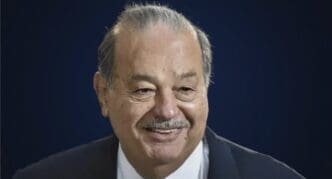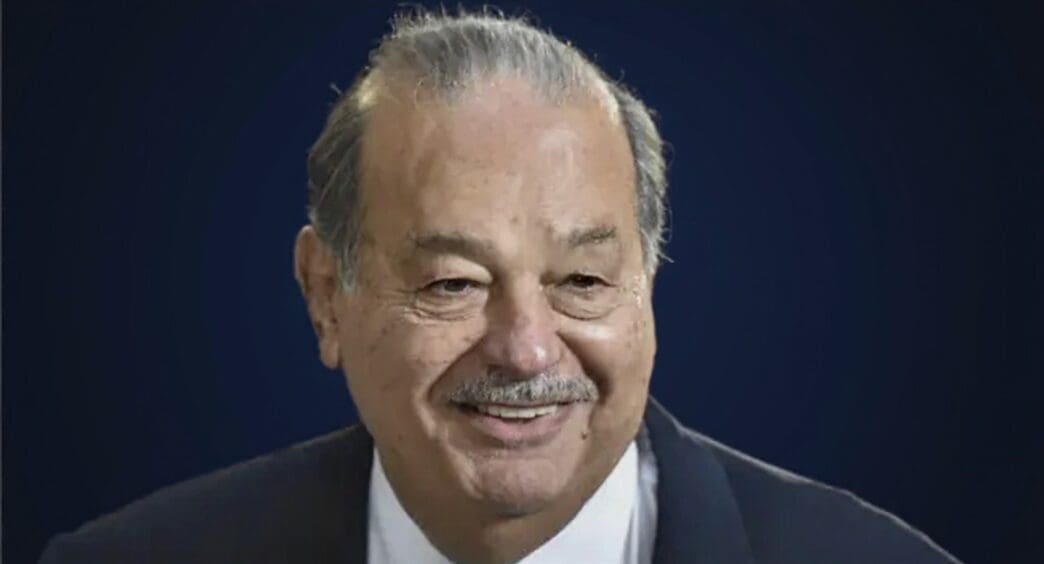KEY POINTS
- Carlos Slim Helú is Mexico’s richest person, with his fortune built on the masterful acquisition and management of a sprawling conglomerate, Grupo Carso.
- The bedrock of his wealth is his telecommunications empire, anchored by América Móvil, which he built after acquiring the state-owned telephone monopoly, Telmex, in 1990.
- Beyond telecoms, his strategy is defined by diversification and vertical integration, with Grupo Carso holding major companies in finance, retail, real estate, and construction that support and reinforce one another.
Carlos Slim Helú, a civil engineer by training, stands as the richest person in Mexico and a perennial fixture among the world’s wealthiest individuals. His immense fortune, estimated in the tens of billions of dollars, was built not on a single invention but through the masterful acquisition and management of a sprawling conglomerate, Grupo Carso. This empire, centered in Mexico City but with a vast global reach, is anchored by its dominant position in Latin American telecommunications through América Móvil, demonstrating a decades-long strategy of identifying undervalued assets, reinvesting profits, and achieving market supremacy.
The story of Slim’s ascent is a masterclass in strategic investing and operational control, offering critical lessons for anyone seeking to understand how dynastic wealth is built in the modern era. While his name is synonymous with telecommunications, his influence extends deep into nearly every facet of the Mexican economy, from the banks that hold citizens’ savings to the stores where they shop and the roads on which they drive.
The Architect of a Telecom Empire: América Móvil
The pivotal moment in Carlos Slim’s journey to becoming a billionaire titan came in 1990. During a wave of privatization in Mexico, a consortium led by Slim acquired Teléfonos de México, or Telmex, the state-owned telephone monopoly. At the time, the company was seen as inefficient and outdated, but Slim saw immense, untapped potential.
He and his team undertook a massive overhaul, investing billions to modernize the infrastructure, expand service, and improve efficiency. This wasn’t merely a financial play; it was a long-term operational commitment. The acquisition gave him a foundational asset with a near-total lock on Mexico’s landline market, providing a massive and steady stream of cash flow.
This cash flow became the engine for his next, and arguably most significant, venture. Slim leveraged his Telmex base to launch a mobile phone division, Telcel. He then spun off these mobile operations into a separate company, América Móvil, which aggressively expanded throughout Latin America, acquiring competitors and building networks from Brazil to Colombia.
Today, América Móvil is one of the largest mobile network operators in the world, serving hundreds of millions of customers under brands like Telcel, Claro, and TracFone in the United States. Its dominance in so many markets makes it a formidable cash-generating machine, forming the bedrock of the Slim family’s fortune.
Beyond Telecoms: The Diverse Portfolio of Grupo Carso
While telecommunications provided the initial rocket fuel, Slim’s genius lies in diversification. His holding company, Grupo Carso—named for himself (Carlos) and his late wife, Soumaya Domit de Slim (Soumaya)—is a complex web of companies spanning numerous critical sectors of the economy. This structure not only spreads risk but also creates powerful synergies between his businesses.
Grupo Financiero Inbursa: The Financial Pillar
A key component of his empire is Grupo Financiero Inbursa, one of Mexico’s largest financial institutions. Inbursa offers a full suite of services, including commercial and retail banking, insurance, brokerage services, and retirement funds. It functions as the financial backbone for the entire conglomerate.
This integration is a strategic masterstroke. When one of Slim’s industrial or infrastructure companies needs capital for a new project, Inbursa can provide the financing. The massive cash flows from América Móvil are managed and invested through Inbursa’s services, creating a closed-loop system that keeps capital within the Slim ecosystem and maximizes its efficiency.
Retail and Real Estate: Touching Everyday Life
Slim’s influence is also felt directly by millions of Mexican consumers through his retail holdings, primarily consolidated under Grupo Sanborns. This includes the iconic Sanborns department stores—a combination of restaurant, pharmacy, and retail shop—as well as Sears Mexico, Mixup music stores, and iShop outlets.
Beyond retail operations, Slim is one of Mexico’s largest real estate owners. His holdings include countless shopping malls, office towers, and residential developments. He has also been a prominent force in the revitalization of Mexico City’s historic downtown, acquiring and restoring dozens of colonial-era buildings, transforming the area into a vibrant cultural and commercial hub.
Infrastructure and Industry: Building the Nation
Through companies like Carso Infraestructura y Construcción (CICSA), Slim is a dominant player in construction and engineering. His firms have been involved in building everything from highways, dams, and water treatment plants to oil platforms and telecommunications infrastructure across Latin America. This vertical integration is again on display, as his construction firms often build the very infrastructure his other companies, like Telmex, require.
His industrial arm also includes significant stakes in mining and manufacturing. This deep entrenchment in the foundational sectors of the economy ensures that as Mexico grows, so does the value of his assets.
The Slim Strategy: A Blueprint for Building Wealth
Understanding Carlos Slim’s success requires looking beyond what he owns to how he acquired and manages it. His business philosophy is built on a few core principles that have guided him for over half a century.
Value Investing and Distressed Assets
Much like Warren Buffett, Slim is a consummate value investor, but with a crucial difference: he often takes an active, controlling stake. His signature move is to acquire companies or assets during times of economic crisis when others are fearful and prices are low. The Telmex acquisition during a period of economic uncertainty in Mexico is the quintessential example.
He looks for fundamentally sound businesses with solid market positions that are temporarily undervalued due to mismanagement or macroeconomic headwinds. He then uses his operational expertise and access to capital to turn them around, unlocking immense value over the long term.
Long-Term Vision and Reinvestment
Slim is famously austere in his personal life, and this frugality is mirrored in his business philosophy. He is not a trader looking for quick profits. Instead, he focuses on long-term growth, consistently reinvesting profits back into his companies to fund expansion, modernization, and acquisitions.
He has often stated that wealth is like an orchard; it must be reinvested to grow more trees. This patient, compounding approach has allowed his empire to grow steadily and withstand economic cycles that have wiped out more speculative fortunes.
Synergy and Vertical Integration
Perhaps the most sophisticated element of his strategy is the creation of a self-reinforcing business ecosystem. His companies are both customers and suppliers to one another. His construction company builds a mall, which is then occupied by his retail stores. The entire project is financed by his bank, and all the businesses communicate using his telecom network. This synergy reduces costs, increases efficiency, and creates a competitive moat that is nearly impossible for rivals to penetrate.
Global Influence and Philanthropy
While his core holdings are in Mexico, Slim’s influence is global. He has made significant international investments, most notably a substantial stake in The New York Times, where he became the largest individual shareholder and provided a crucial loan to the company during the 2008 financial crisis. He also holds stakes in various European telecom and industrial firms.
Alongside his business activities, he directs a significant philanthropic enterprise through the Fundación Carlos Slim. The foundation has invested billions in initiatives across Latin America, focusing on health, education, and digital inclusion. It has funded everything from large-scale vaccination programs and disease research to providing computers and internet access to remote schools, aiming to empower the next generation with the tools for success.
Carlos Slim Helú’s story is one of shrewd vision, disciplined execution, and an unparalleled understanding of economic cycles. From a single state-owned telephone company, he constructed a diversified and deeply integrated empire that not only made him Mexico’s richest man but also fundamentally shaped the nation’s modern economy. His legacy is a testament to the power of long-term, value-oriented investing and a blueprint for building wealth on an epic scale.








